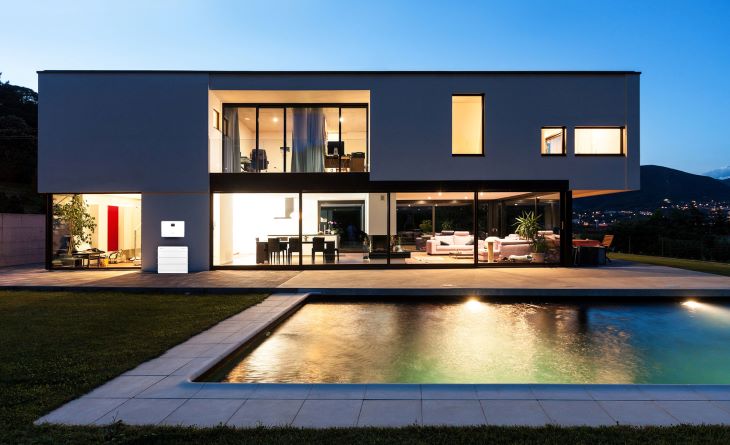
uPVC windows and doors offer sustainable energy efficiency for today’s projects
uPVC technology has been the preferred material for energy-efficient and durable windows and door frames for many years, but a high price point made it the realm of high-end projects. New technology from REHAU has changed the value equation radically, bringing the multitude of uPVC benefits within reach of a greater range of projects and homes.
“uPVC combines the benefits of timber and aluminium. By making it affordable, REHAU’s PURELINE range is set to change the way architects specify projects, from single residences to massive projects,” says Stephan van Niekerk CEO, REHAU Industries South Africa. “uPVC will transform the way South African buildings are designed and built, improving the experience of those who live and work in them.”
Since it is an insulative material, uPVC reduces the amount of heat or cold that gets transferred into a building from the outside. On the contrary, aluminium frames are highly conductive. In addition, thanks to its innovative construction, uPVC frames are fully watertight, removing one of the most common items on a project snag list and long-term headaches for the developer, contractor, and homeowner alike.
The unique design of the uPVC frames makes it easy for glass of different thicknesses and types to be installed. As a result, double glazing can be easily installed at any time to improve the ability of the window or door to insulate further against the transfer of heat and noise.
An additional sustainability bonus is REHAU’s commitment to the circular economy. At the end of their lifespan, uPVC frames are fully recyclable into new frames or other uPVC products.
Security remains a key concern for South Africans. uPVC is a steel or composite reinforced material, and REHAU has leveraged this characteristic to design doors and windows with optional multipoint locks, making them harder to access. REHAU’s unique uPVC design also means that the beading is very difficult to remove – this, in combination with safety glass, improves its security even more.
uPVC is intrinsically a low-maintenance material – it will not warp or rot and can easily be cleaned using dishwashing liquid. South African conditions are harsh, and REHAU has developed a uPVC variant that includes a high percentage of Titanium Dioxide, ensuring the frames are not subject to colour changes or degradation due to UV radiation.
“Compared to traditional materials, uPVC window and door frames offer clear benefits in terms of reducing noise and heat transfer, and generally resisting harsh climates for many years,” says Van Niekerk. “Now that the price differential with aluminium has been all but eliminated, architects should be preparing to discuss the uPVC option with their clients, secure in the knowledge that this technology will also make the project itself more successful and offer significant long-term benefits in terms of comfort and significantly lower energy usage”
Jarmila Logie, a long-established architect at Jarmila Logie Associates Architects, is one who needs no persuading. She has been using REHAU uPVC products for decades, and says they have performed extremely well, showing no signs of wear after 30 years. She says that uPVC’s lack of conductivity means that it makes managing temperatures in the building, both in winter and in summer, much easier.
She elaborates that uPVC’s thermal properties make it an important material when it comes to building environment-friendly buildings that cost less to heat or cool. She alludes to studies that show uPVC windows can save up to 30% more energy than aluminium windows, thanks to their poor thermal conductivity and superior sealing.
Logie notes that uPVC windows and doors frequently use multiple point-locking mechanisms to provide a better seal – these mechanisms have the added advantage of greatly enhancing the security they offer. This is no small benefit for South Africans.
Another important point for architects is colour. The fact that REHAU has developed a paint that can be used on its frames, at an additional cost, means that they can be integrated into the overall design much better, she says, citing the current trend of black or charcoal frames.
“It was a great pity that uPVC was never properly marketed here in South Africa, allowing aluminium to establish itself,” Logie says. “I feel very happy that REHAU has developed a suitable design for the African market, and one that’s affordable. Now, the many benefits of uPVC will be within reach of fellow architects and their clients.”
More news
- PART 2: CONCRETE IN THE DESIGN OF A UNIQUE LUXURY HOME IN GEORGE, SOUTH AFRICA
- PART 1: CONCRETE IN THE DESIGN OF A UNIQUE LUXURY HOME IN GEORGE, SOUTH AFRICA
- MVULE GARDENS, AFRICA’S LARGEST 3D-PRINTED AFFORDABLE HOUSING PROJECT
- PART 3: HARNESSING THE POTENTIAL OF HIGH SULPHUR FLY ASH IN CONCRETE PRODUCTION
- PART 2: HARNESSING THE POTENTIAL OF HIGH SULPHUR FLY ASH IN CONCRETE PRODUCTION





